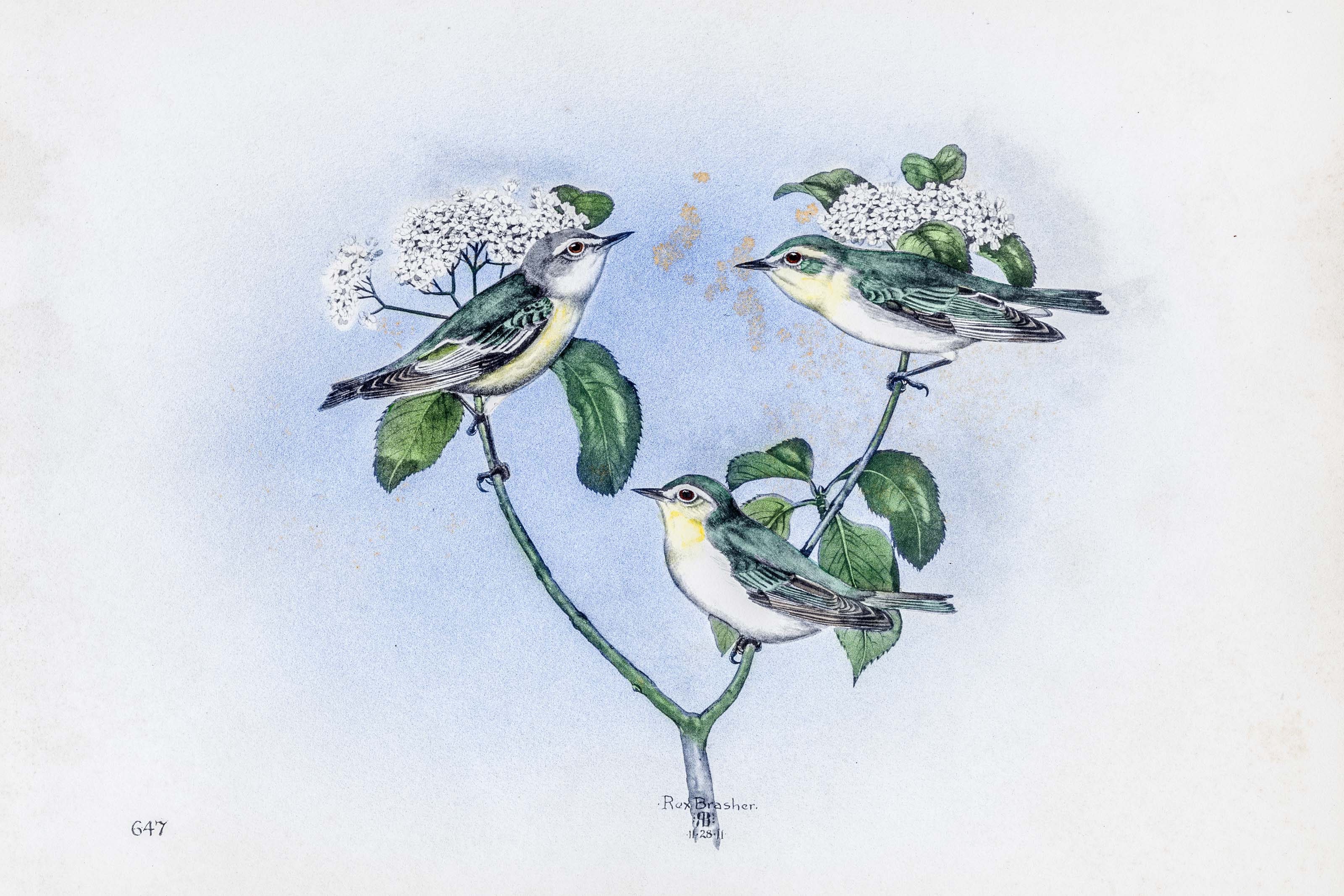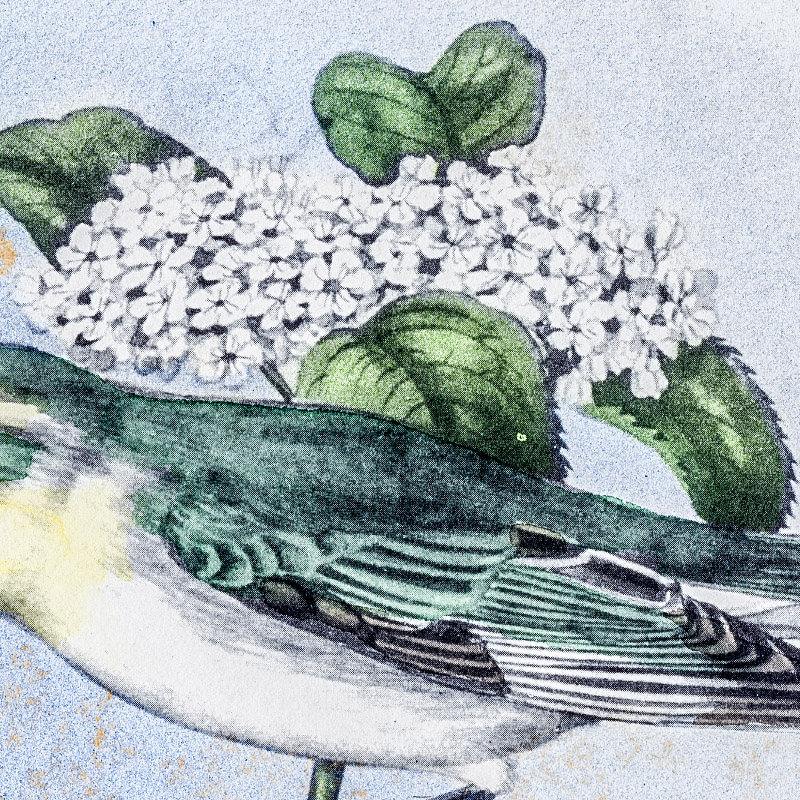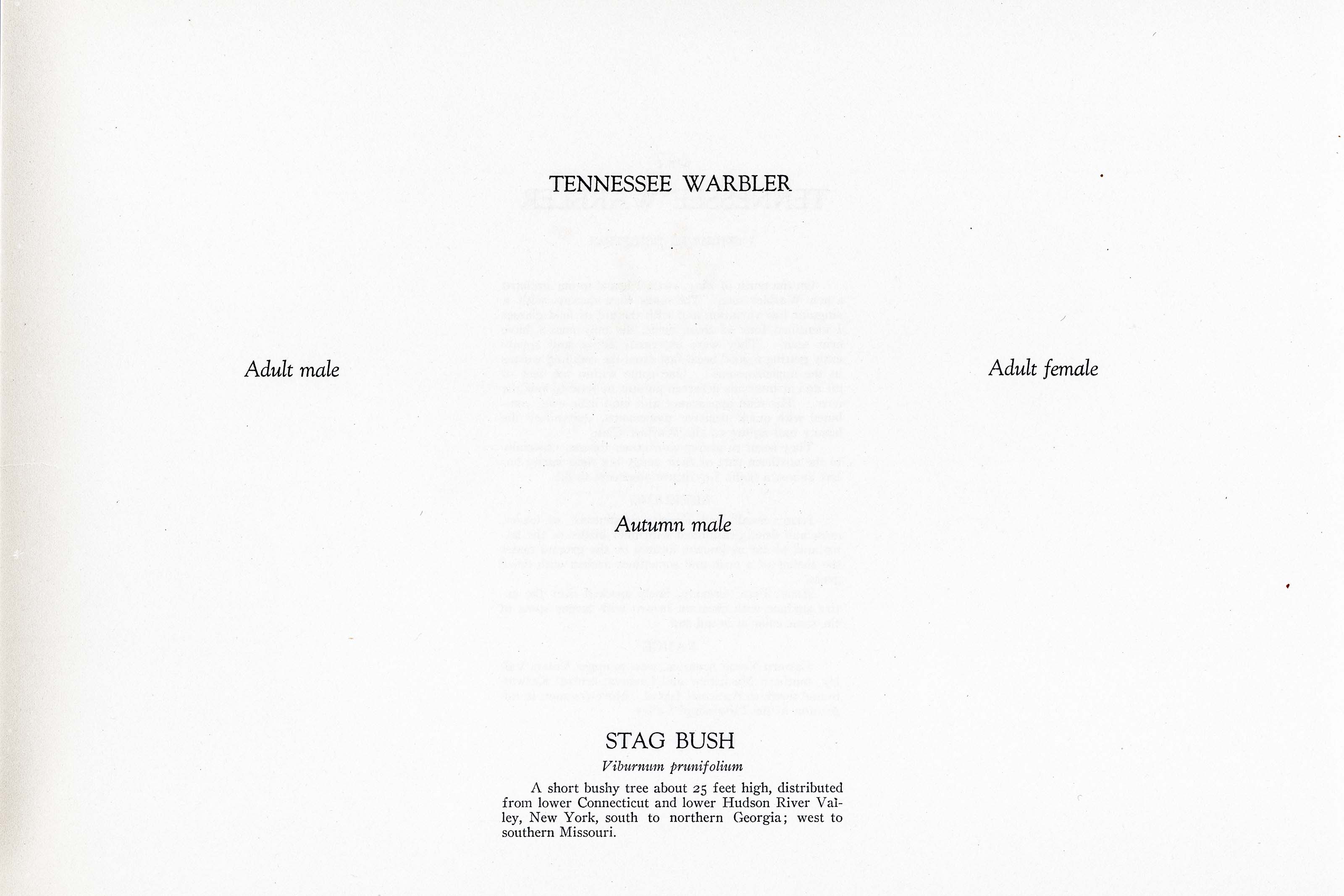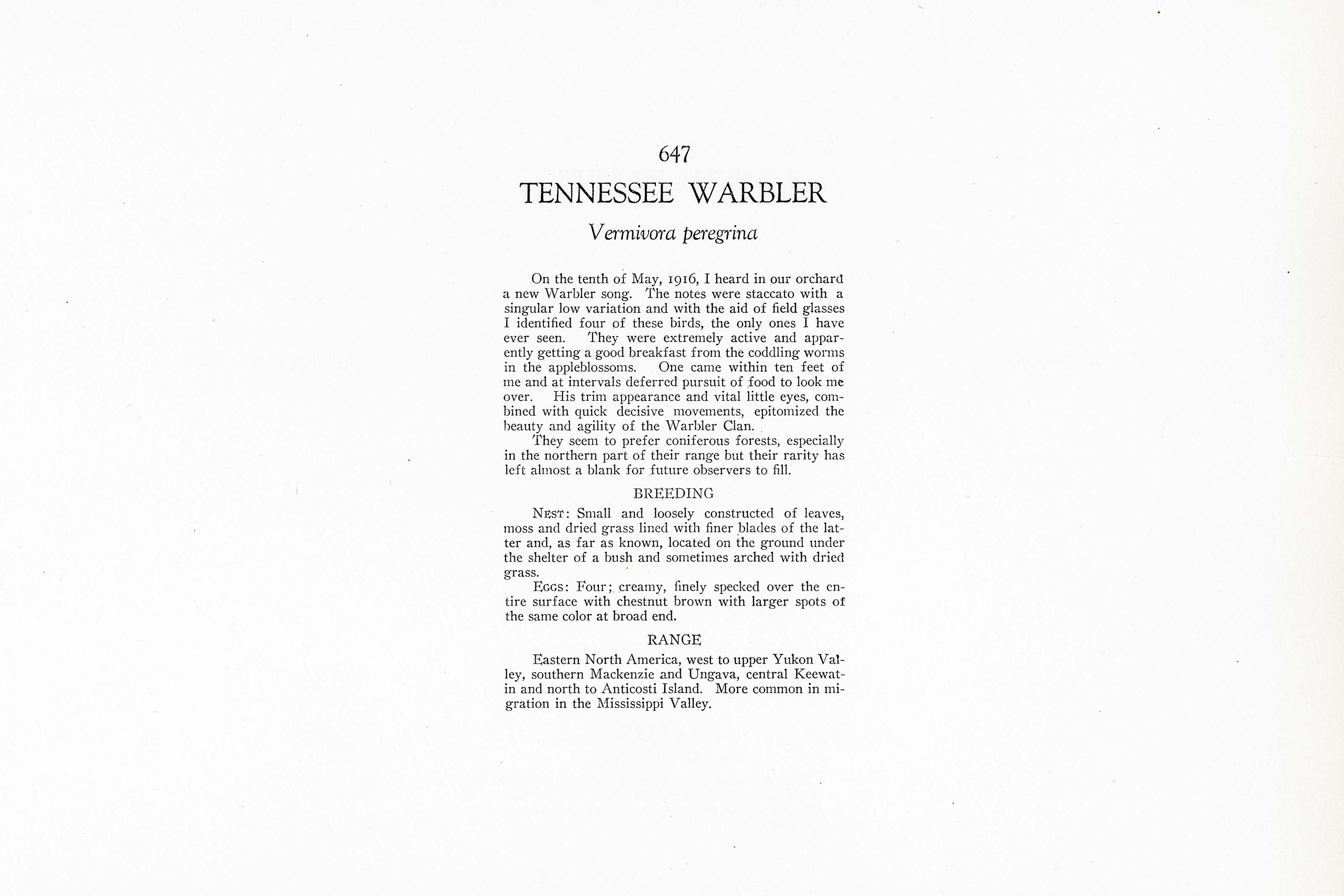






1911
1930
11
647
A team of dedicated board members, volunteers, and student interns has published every page in Volume 9. This volume includes 360 images of paintings and lyrical descriptions of birds, now available online for everyone to enjoy anywhere in the world. This is a monumental task. Each volume requires approximately 400 hours to photograph, edit, transcribe, catalog, and publish online. We need your support to complete this work.
If you're tech-savvy, have a good eye, are meticulous with details, and love structured data, please consider volunteering by emailing us at hello@rexbrasher.org.
We encourage all bird lovers and supporters to consider a monetary donation to support our mission to make Rex's work available for everyone. You can provide a one-time or recurring donation online.
On the tenth of May, 1916, I heard in our orchard a new Warbler song. The notes were staccato with a singular low variation and with the aid of field glasses I identified four of these birds, the only ones I have ever seen. They were extremely active and apparently getting a good breakfast from the coddling worms in the appleblossoms. One came within ten feet of me and at intervals deferred pursuit of food to look me over. His trim appearance and vital little eyes, combined with quick decisive movements, epitomized the beauty and agility of the Warbler Clan.
They seem to prefer coniferous forests, especially in the northern part of their range but their rarity has left almost a blank for future observers to fill.
NEST: Small and loosely constructed of leaves, moss and dried grass lined with finer blades of the latter and, as far as known, located on the ground under the shelter of a bush and sometimes arched with dried grass.
EGGS: Four; creamy, finely specked over the entire surface with chestnut brown with larger spots of the same color at broad end.
Eastern North America, west to upper Yukon Valley, southern Mackenzie and Ungava, central Keewatin and north to Anticosti Island. More common in migration in the Mississippi Valley.
A short bushy tree about 25 feet high, distributed from lower Connecticut and lower Hudson River Valley, New York, south to northern Georgia; west to southern Missouri.